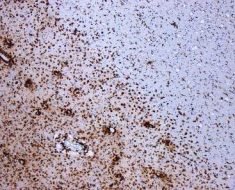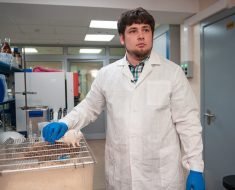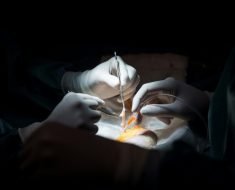Researchers at the University of Virginia School of Medicine have discovered that microglia, specialized immune cells in the brain, play a key role in clearing dead material after brain injury. The study, which will be published June 25 in the Journal of Experimental Medicine, reveals that microglia gobble up the remnants of injured neurons, which could prevent the damage from spreading to neighboring neurons and causing more extensive neurodegeneration.
In every tissue of the body, dead and dying cells must quickly be removed to prevent the development of inflammation, which could trigger the death of neighboring cells. This removal is carried out by specialized cells that engulf and break down cellular debris, otherwise known as phagocytic cells. But scientists have yet to determine which cells are responsible for removing neuronal debris when the brain or spinal cord is damaged.
Jonathan Kipnis, chairman of UVA’s Department of Neuroscience, and his colleagues examined injuries to the optic nerve of mice, which cause retinal ganglion neurons to degenerate and leave debris in a distant region of the brain. The researchers found that this debris is engulfed by microglia.
Microglia, which permanently reside in the central nervous system, are a type of phagocytic cell that can engulf bacteria and other pathogens that have infected the brain. They also play an important role in the developing brain, pruning away neuronal synapses that have failed to become fully active.
In adult brains, microglia appear to recognize degenerating neurons using some of the same molecules they use to recognize inactive synapses or invading pathogens. Kipnis and colleagues found that, after optic nerve injury, microglia produce “complement” proteins that help the phagocytic cells identify their targets.
The researchers studied what happened after optic nerve injury in mice when microglia did not produce “complement” proteins and found that the microglia did not clear the debris.
Source: Read Full Article





